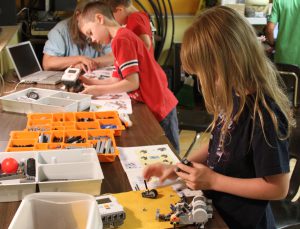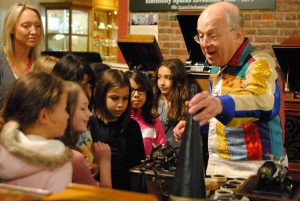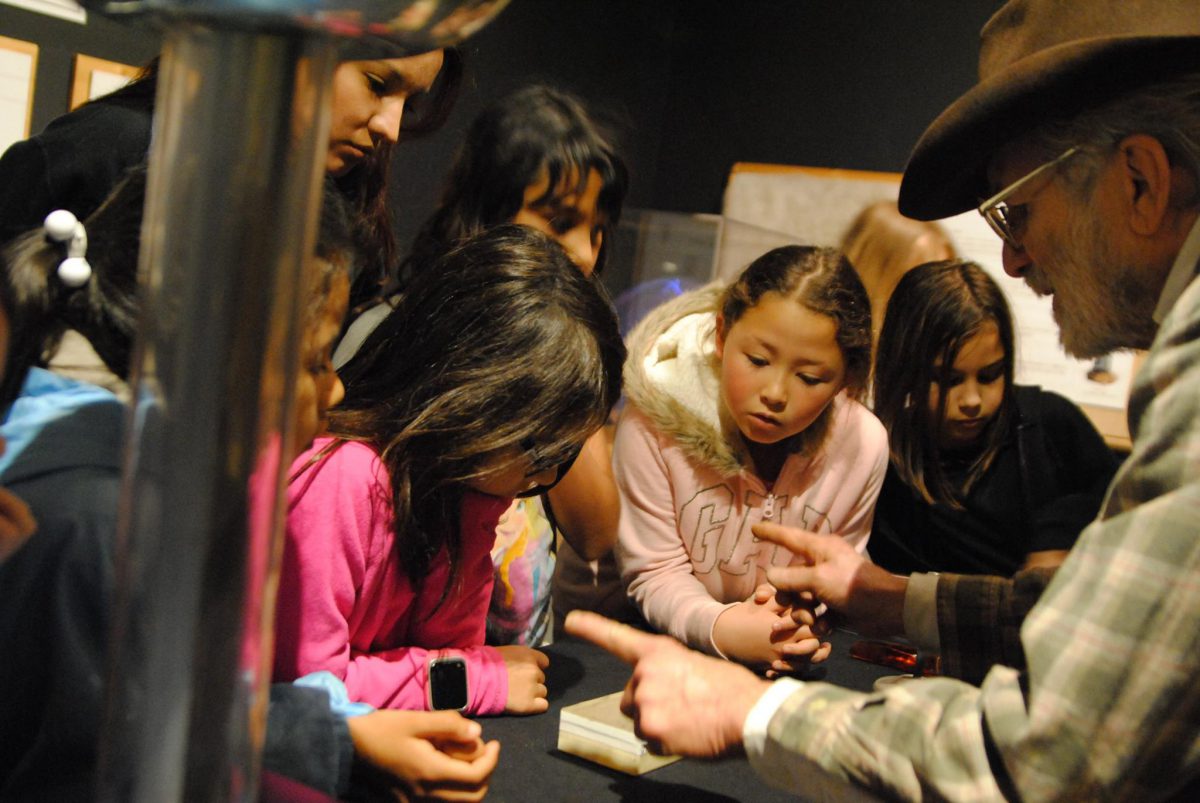“If you want to win at cards,” says Tana Granack, SPARK Museum’s operations director, “don’t bring a rabbit’s foot. Learn your math and statistics.”

Putting together LEGO robots.
His point is that science, technology, engineering and mathematics — those STEM disciplines you’ve probably heard so much about — are everywhere, involved in all aspects of life. They’re not boring and stodgy lessons to sleep through during school; they’re vibrant, important skills that have a bearing on all aspects of life — whether that’s a simple game of cards, finding success at work, or understanding the world around you.
STEM skills such as effective problem solving, analytical thinking and the ability to work independently aren’t just for people going into science, technology, engineering and mathematics. STEM thinking — SPARK thinking, we also like to call it — is a fundamental skill every human who walks this fantastic planet should know, especially if they hope to be successful while on it.
SPARK Museum is dedicated to STEM learning
That’s why STEM is more than the sum of its parts. Instead of teaching science, technology, engineering and mathematics as separate subjects, STEM combines them into a cohesive whole, using real-world examples — like the incredible inventions at SPARK Museum — to help kids understand how stuff works.
“We’re not here to lead you to water,” says John Jenkins, SPARK president and CEO. “We’re here to make you thirsty.”

Docent Mark Allyn demonstrates an Edison phonograph.
As a museum full of ingenious inventions, fascinating electrical devices and interactive historical displays, SPARK fills an important role in getting youth excited about STEM. The goal is not for kids to memorize the names of famous scientists or historic dates. Rather, the goal is to get them excited about science in the first place.
SPARK field trips and fun science events are designed to enable kids to walk out with a solid grasp of scientific method and another way to look at and judge the natural world — how to see in the dark, how to fish for information in the natural world, how to know things (to really know things).
As the nonprofit organization Washington STEM puts it, STEM learning is critical for youth who will one day grow up to change the world.
“We believe that through a high-quality STEM education,” the Washington STEM website reads, “Washington students will become the leaders, critical thinkers, and creators that will tackle the biggest challenges facing our state, nation, and the world.”
At the core of STEM teaching and learning are skills and abilities that help make us better neighbors and more informed citizens, including being independent, learning how to take care of yourself, and gaining a broader understanding of the world around you. These are lessons for a lifetime, and this is a class you never graduate from.
Drop by SPARK and see what STEM is all about!
